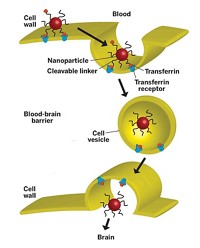Advertisement
Grab your lab coat. Let's get started
Welcome!
Welcome!
Create an account below to get 6 C&EN articles per month, receive newsletters and more - all free.
It seems this is your first time logging in online. Please enter the following information to continue.
As an ACS member you automatically get access to this site. All we need is few more details to create your reading experience.
Not you? Sign in with a different account.
Not you? Sign in with a different account.
ERROR 1
ERROR 1
ERROR 2
ERROR 2
ERROR 2
ERROR 2
ERROR 2
Password and Confirm password must match.
If you have an ACS member number, please enter it here so we can link this account to your membership. (optional)
ERROR 2
ACS values your privacy. By submitting your information, you are gaining access to C&EN and subscribing to our weekly newsletter. We use the information you provide to make your reading experience better, and we will never sell your data to third party members.
Pharmaceuticals
Fatty Bundles Sneak siRNA Into Cells
Nanotechnology: Lipid nanoparticles offer a new way to deliver therapeutic nucleic acids
by Erika Gebel
November 21, 2011

Inside a cell, small interfering RNAs (siRNAs) can silence genes responsible for disease, making them ideal molecules for gene therapy. But siRNAs have trouble getting there. Now researchers report that they can smuggle the nucleic acids into cells by wrapping them in lipid nanoparticles (ACS Nano, DOI: 10.1021/nn203745n).

Like all nucleic acids, siRNAs are packed with negative charges, so they don’t easily penetrate cells’ hydrophobic membranes. To solve this problem, Richard Zare of Stanford University and his colleagues decided to encapsulate siRNAs in small greasy spheres called solid lipid nanoparticles. But because of the same negative charges, loading siRNAs into lipid nanoparticles is also difficult, says Zare. So the researchers mixed siRNA with a positively charged lipid called 1,2-dioleoyl-3-trimethylammonium-propane (DOTAP), which masked the nucleic acid’s negative charge and provided a hydrophobic hook to draw the complex into the belly of the nanoparticle.
To test their delivery system, the researchers injected nanoparticles charged with a fluorescently labeled siRNA and DOTAP into the left hind feet of mice and injected the labeled siRNA alone into the right feet. They found that the left feet containing nanoparticles glowed for 11 days, while the right feet without the particles glowed for two. This difference, says Zare, suggests that the nanoparticles protect the siRNA from quick degradation and release the nucleic acids slowly over time—two desirable properties for delivery of gene therapies. Using fluorescence microscopy, the scientists spotted the fluorescent dye inside skin cells from the left feet, confirming the nanoparticles’ ability to sneak siRNA into cells.
Zare’s lab is now working on using their siRNA-carrying nanoparticles to shut down disease-causing genes in mice.




Join the conversation
Contact the reporter
Submit a Letter to the Editor for publication
Engage with us on Twitter